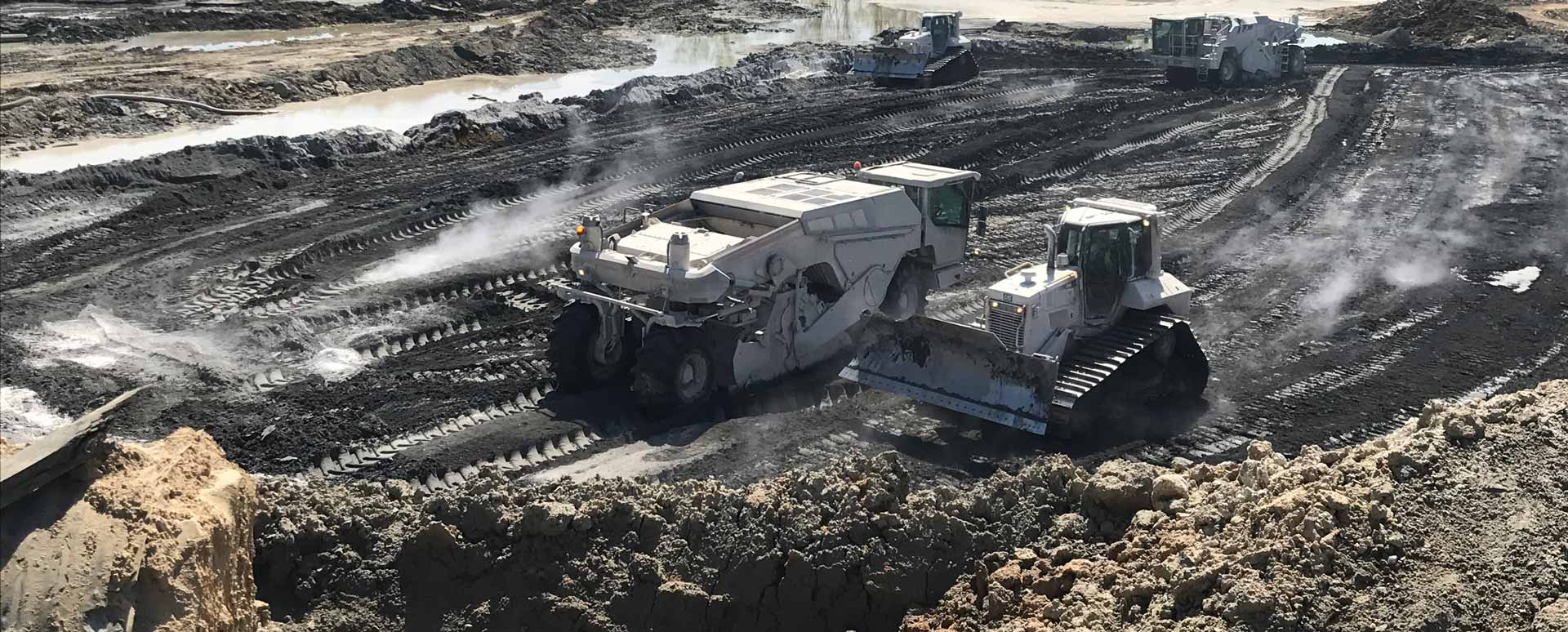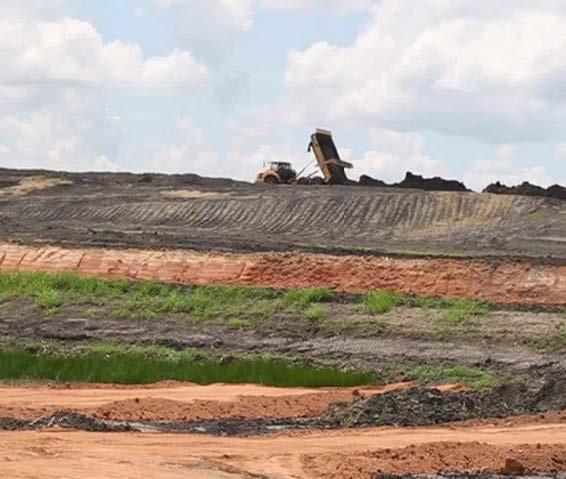Coal Ash Pond Remediation

Coal Ash Pond EPA Regulation History
After a catastrophic spill in December of 2008 that flooded over three hundred acres of land with coal combustion residuals (CCR), the United States Environmental Protection Agency (USEPA) proposed regulations regarding the disposal of CCRs. The CCR regulations became final in April 2015. This regulation, sometimes referred to as The CCR Rule or The Federal Rule, regulates the disposal of CCR, and creates technical requirements for relevant surface impoundments and landfills. This federal program established the minimum requirements for managing CCR’s at the state level. Since the inception of the rule, some states have received authorization from USEPA to manage their own program. Those states can adopt the federal standard or add regulations specific to the requirements of the state. Refer to the USEPA website for more compliance information, history of regulations and state authorizations.
Let’s work together.
Treatment Solutions for Ash Pond Residuals
Coal ash pond remediation is a complex process that requires careful planning, engineering expertise, and adherence to environmental regulations and guidelines. The goal is to mitigate the potential risks associated with coal ash and protect human health and the environment.
Coal ash, sometimes referred to as CCR, is produced from the burning of coal at coal-fired plants. It can be contaminated with heavy metals such as arsenic, mercury and more. Local, State and Federal regulations work to ensure safe and proper steps are taken as past, present, and future CCRs are considered. While each site undoubtedly shares many similarities, each is also unique. Among the questions that must be answered are whether an ash pond can effectively close in place or does the material need to be excavated and the residuals managed onsite or transported offsite for beneficial use or disposal. In each case, there are several options to consider for proper management of the CCR material. Each option must be considered on a case-by-case basis to achieve the remediation goals for full compliance with the regulations.
The Code of Federal Regulations (CFR) lists the criteria for the classification of solid waste disposal facilities and practices. Subpart D classifies standards for the disposal of CCR in landfills and surface impoundments. New CCR landfills, or expansions, must be designed, constructed, operated, and maintained with either a composite liner or alternative composite liner and a leachate collection and removal system. The closure and/or retrofit of CCR units can be divided into two sub-categories, close-in-place, or clean closure.
The close-in-place option allows material to be left in place and covered to minimize water infiltration and erosion. In a clean closure, the coal ash must all be removed and confirmed with laboratory testing that removal is complete. Some level of over excavation of the ash pond will be required to successfully remove any contaminants from the underlying soil. All the excavated material is subject to proper management which may include beneficial use, onsite consolidation in a lined cell or offsite disposal options. To accomplish complete removal of the ash and contaminates, various methods of dewatering, solidifying, and drying the ash will be required.
Related Products and Solutions
As previously mentioned, clean closure of an ash pond can require significant dewatering efforts to efficiently remediate the pond. Ash pond closure projects are lengthy, complex, and expensive to implement. Clean closure requires the ash to be dry to minimize the amount of material that must be removed while stabilization supports easy handling and immobilization of contaminants. Mintek’s lime-based products can help to chemically dry, solidify and stabilize coal ash; they are especially useful at drying material that is reluctant to give up trapped water.
Coal ash pond remediation using calcium-based products is a common technique employed to stabilize and mitigate the environmental impact of coal ash. Lime and Calciment® LKD are calcium-based products that can help reduce the mobility of contaminants in the ash, immobilize heavy metals, and improve the overall stability of the ash. Once applied, lime and Calciment® LKD undergo chemical reactions with the ash. Water is chemically combined while the alkaline nature of the lime products raises the pH of the ash, creating an environment that reduces the leaching and mobility of heavy metals, helping to immobilize contaminants and reduce their potential for environmental impact.
The chemistry involved in solidification/stabilization (S/S) is complex, but the mechanisms considered to reduce the mobility of contaminants include:
- Sorption to soil and binder / additive materials
- Precipitation because of pH modification, reducing solubility
- Incorporation within the crystalline lattice
- Encapsulation within a formation of cementitious gel
Additionally, lime and Calciment® LKD possess impressive drying characteristics that can be especially useful for CCR’s that are reluctant to give up trapped water.
Coal Ash Pond Remediation Challenges
- Often, with closures, wet ash needs to be excavated and hauled to a landfill. Depending on the requirements of the operating permit of the landfill, the material may have to meet certain strength criteria. Often the solution is to dry the material with quicklime or Calciment® LKD. Drying with lime-based products helps to minimize the tons of material that needs to be transported by reducing the water content of the ash.
- Timelines are always aggressive. Mintek’s products help to accelerate progress, not only during “normal” production times, but also in frigid conditions. The heat of reaction associated with Mintek’s products accelerates the removal of water and can keep projects moving, even when dipping temperatures would normally halt work.
- It has been said that coal ash projects are really water projects and proper management of water is necessary. Drying coal ash helps to minimize the amount of water that needs to be treated while reducing the dry tonnage required for management. The net result is chemical drying of the ash, which saves time and money for the overall project.
- It is worth noting that the specific application and effectiveness of calcium-based products, such as quicklime and Calciment® LKD, in coal ash pond remediation, may vary depending on site-specific conditions, such as the characteristics of the ash, climate, and mixing techniques.
Why Choose Mintek?
For almost 30 years, Mintek has been supplying coal ash pond remediation leaders with lime-based products to help with the treatment of coal ash pond residuals. Mintek has supplied both quicklime and Calciment® LKD for ash pond solutions, helping project owners meet their project goals.
Contact us for more information on products for your coal ash pond project.
Projects
Check out our Ash Pond case studies for in depth project overviews:
We're here to help you find the best solution for your next project. Let's get started. Give me a call at 937-641-9901.

Josh Weser
Mintek Resources
Related Posts
Full Depth Reclamation: What It Is & Best Practices
What is Full Depth Reclamation (FDR)? Full depth reclamation, or FDR for short, is a pavement recycling technique that produces a stabilized base by beneficially reusing multiple layers and materials of an asphalt pavement. This technique saves time, money, materials...

